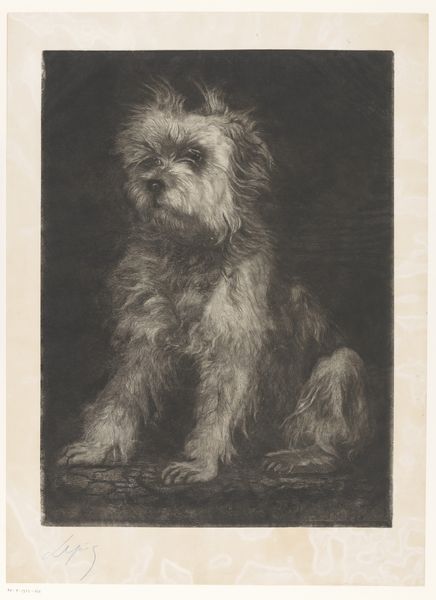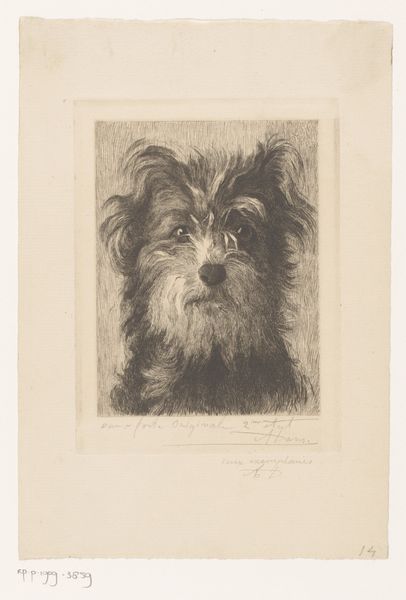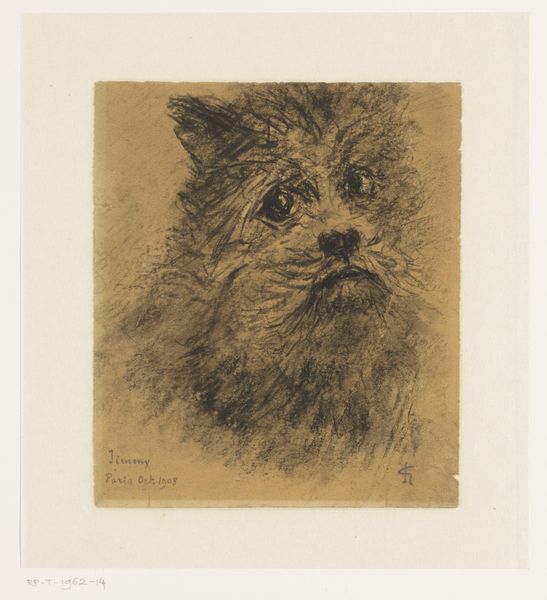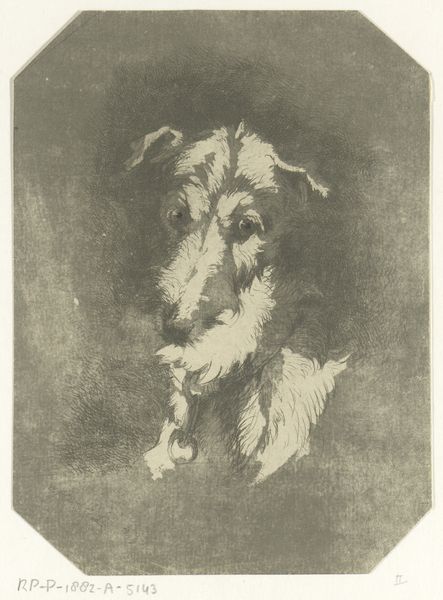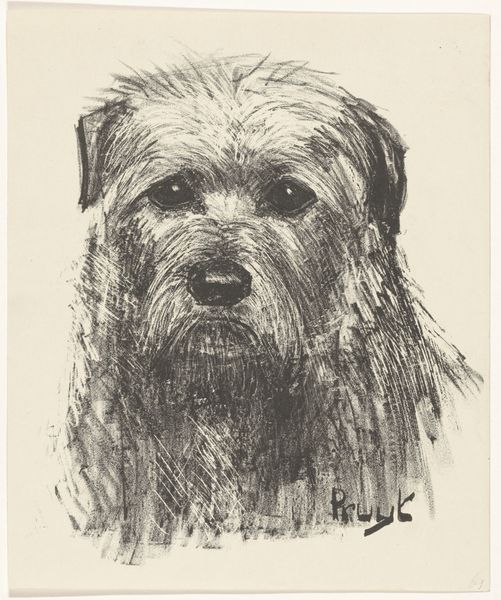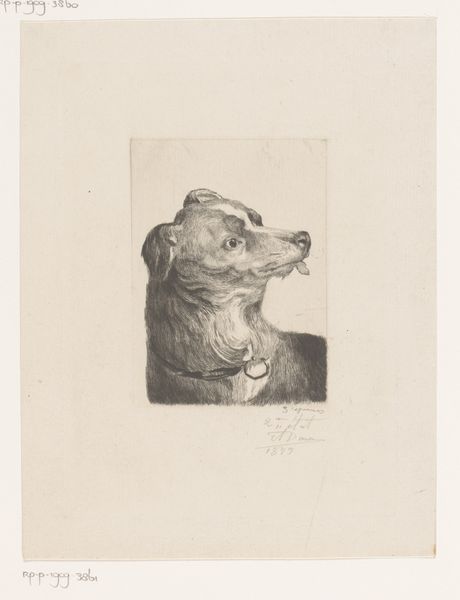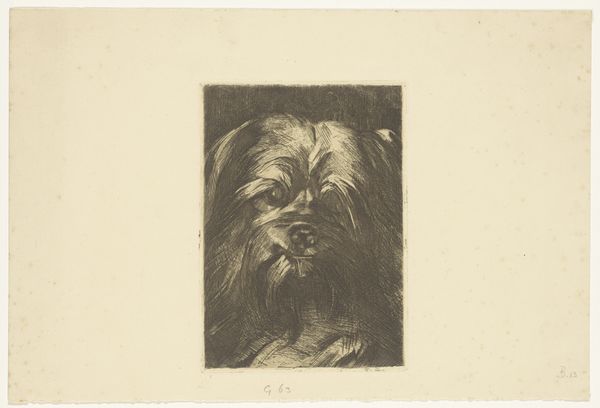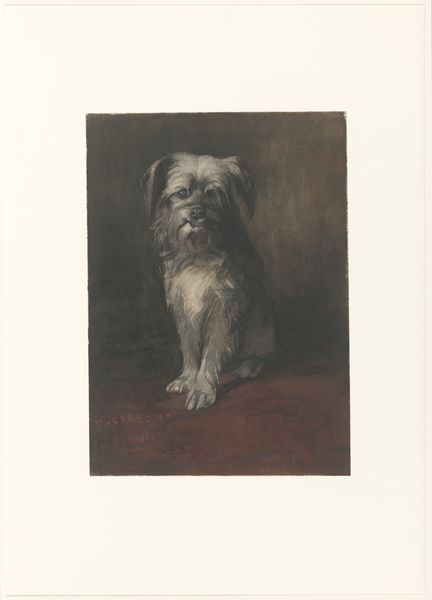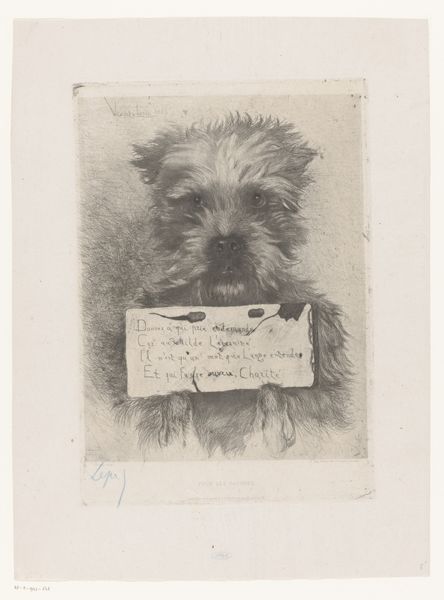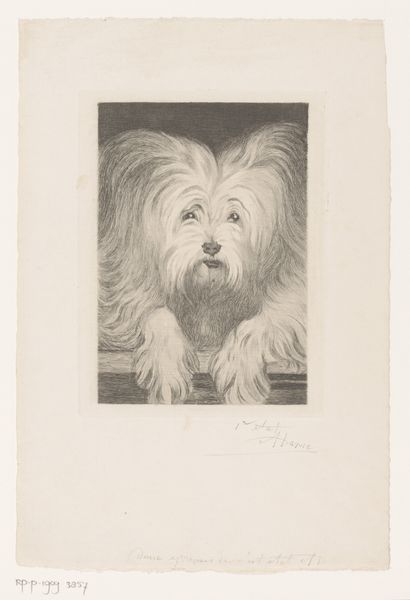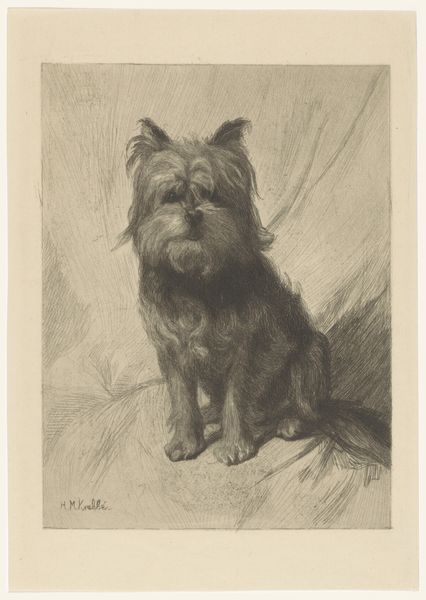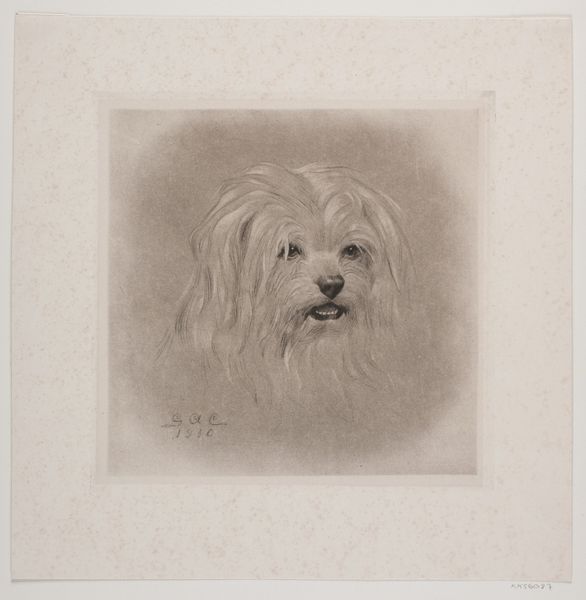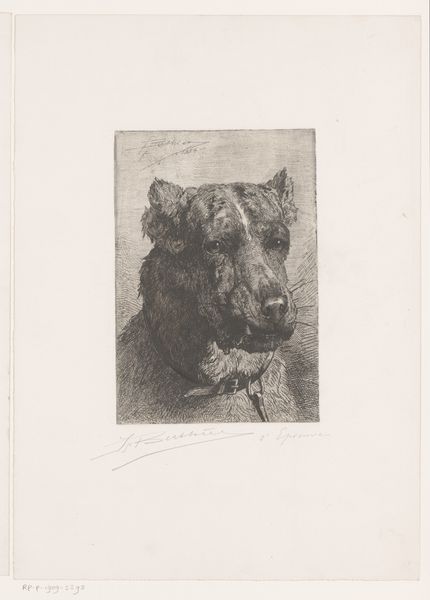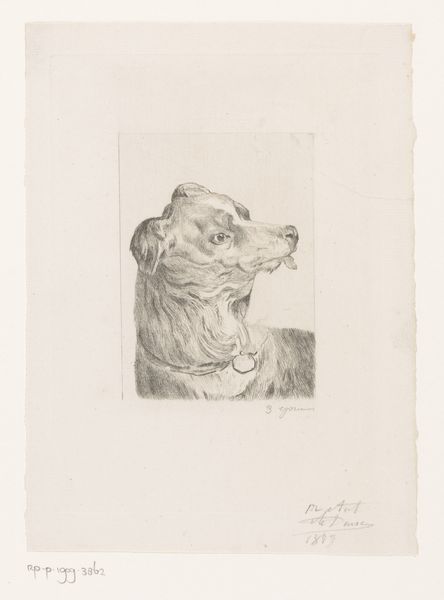
print, etching
#
portrait
#
pencil drawn
# print
#
etching
#
dog
#
realism
Dimensions: height 238 mm, width 216 mm
Copyright: Rijks Museum: Open Domain
Editor: Here we have "Hondenkop," or "Dog Head," an etching by Florimond Buyck, made sometime between 1870 and 1909. It's incredibly detailed, capturing so much texture in the dog's fur. What do you see in this piece? Curator: From a formalist perspective, the power of this print lies in the contrasting textures achieved through etching. Notice the tight, almost frantic lines used to depict the fur around the dog’s face, creating a tangible sense of volume and roughness. Editor: Yes, it’s almost sculptural. Curator: Precisely. Then, observe the relative smoothness of the background. This contrast isn't just descriptive; it emphasizes the animal's presence, pulling it forward. How does the composition contribute to the work? Editor: I think the close-up framing, just the head and shoulders, isolates the subject and focuses our attention. Curator: Indeed. By cropping the subject so tightly, Buyck directs our gaze to the dog's features, enabling an in-depth study of its gaze and physiognomy. The success hinges upon Buyck’s technical mastery and close visual observations, achieving a likeness which feels startlingly intimate. The stark contrast emphasizes depth within a relatively shallow plane. The print offers visual depth in the material and textural differences. Editor: It's amazing how much emotion is conveyed through those technical choices, capturing the individuality of this animal. Curator: Absolutely. And it speaks volumes about the capabilities of etching as a medium, manipulating light and shadow. Editor: I never would have noticed that without you pointing out how it uses the contrasts to pop out. Curator: Attending to the formal components can unveil artistic choices we may initially overlook.
Comments
No comments
Be the first to comment and join the conversation on the ultimate creative platform.
